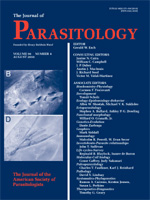The most frequent causative agents of cercarial dermatitis in Europe are the avian schistosomes of the genus Trichobilharzia. They preferably parasitize birds of the Anatidae. Trichobilharzia spp. schistosomes are also able to penetrate mammalian skin, posing a health risk to mammals, including humans. Currently several loci from nuclear and mitochondrial genomes are determined for European species of Trichobilharzia. Among them there is 1 genome sequence, ToSau3A, which is suitable for detection of Trichobilharzia spp. infection in aquatic systems. In the present paper, we used a PCR assay to obtain novel genome sequences from cercariae isolates of 3 European bird schistosome species (Trichobilharzia franki, Trichobilharzia szidati, and Trichobilharzia regenti) collected from freshwater ponds in Belorussia and Russia. We applied RAPD-fingerprinting using 1 random primer to differentiate 3 trichobilharzian species and subsequently cloned and sequenced putative species-specific RAPD fragments. One of them (410 bp in length), which was obtained for T. franki, revealed 64% homology with the repeat region of Schistosoma mansoni (GenBank FN357352) and turned out to be suitable for designing a specific primer pair (TR98F and TR98R) to detect 7 novel DNA sequences in the genome of 3 European Trichobilharzia species. The newly designed primer pair was found to be potentially suitable for PCR-based detection of trichobilharzian infection in snails. PCR primers TR98F and TR98R amplified only the DNA isolated from cercariae and sporocysts of 3 trichobilharzian species, but neither the DNA of 3 other digenean species (Bilharziella polonica, Apatemon sp., and Diplostomum sp.) nor the DNA of uninfected host snails (Lymnaea stagnalis, Radix auricularia, and Radix ovata).
How to translate text using browser tools
1 August 2010
Detection of European Trichobilharzia Schistosomes (T. franki, T. szidati, and T. regenti) Based on Novel Genome Sequences
A. V. Korsunenko,
G. G. Chrisanfova,
A. P. Ryskov,
S. O. Movsessian,
V. A. Vasilyev,
S. K. Semyenova
ACCESS THE FULL ARTICLE

Journal of Parasitology
Vol. 96 • No. 4
August 2010
Vol. 96 • No. 4
August 2010




